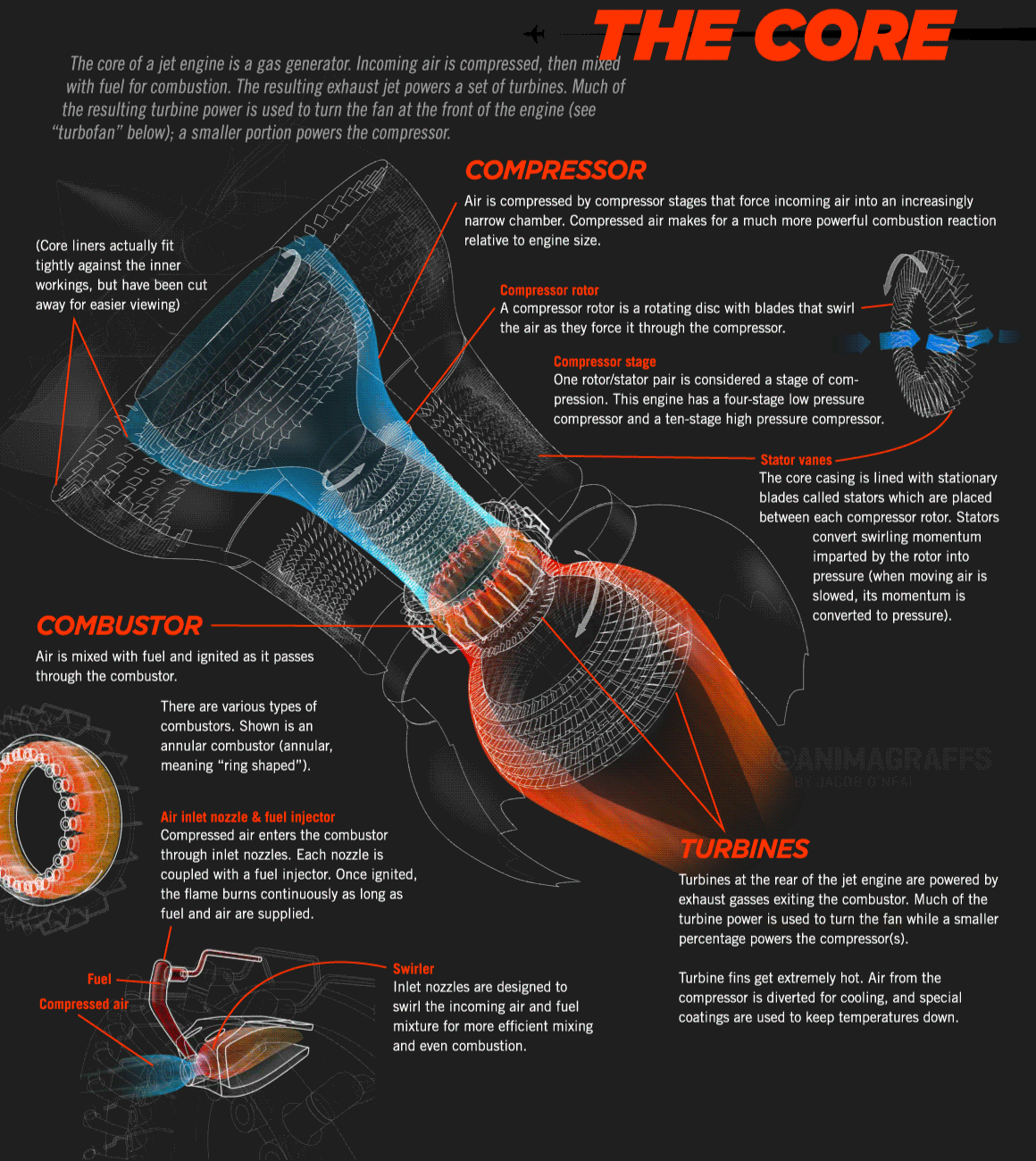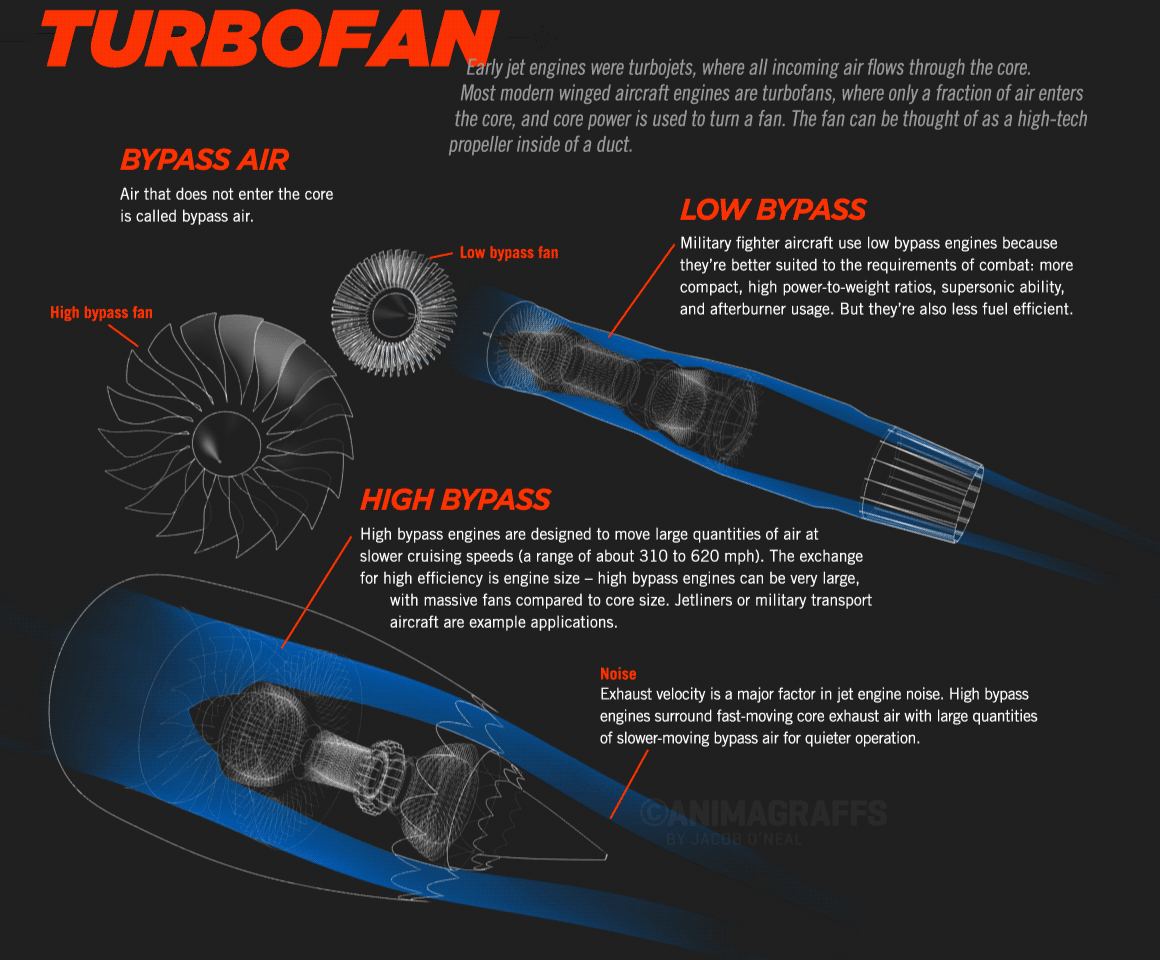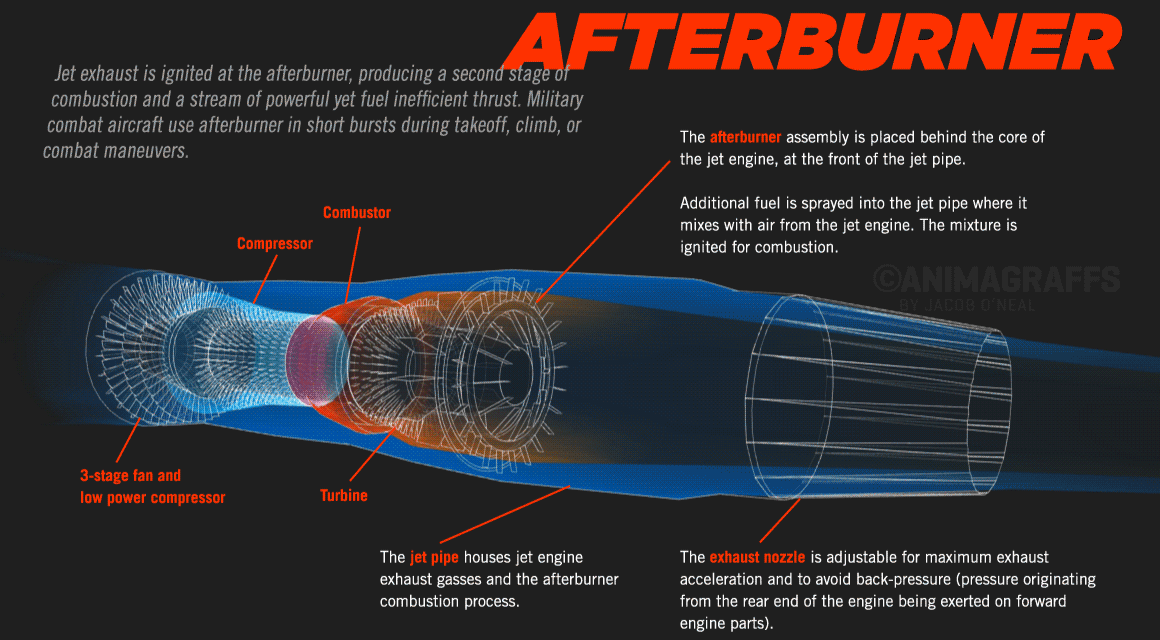It looks like you're using an Ad Blocker.
Please white-list or disable AboveTopSecret.com in your ad-blocking tool.
Thank you.
Some features of ATS will be disabled while you continue to use an ad-blocker.
18
share:




A fantastic info-graphic showing the differences between military and civil engines - very good for a quick education. It is fairly accurate too! Thought you all would enjoy this.
Wonderful graphics. Especially since they are animated as well.
Mmmm
Now, I know why birds don't come out the same way as they went in!
Silly humans still using atmosphere to fly..........
Now, I know why birds don't come out the same way as they went in!
Silly humans still using atmosphere to fly..........
Awesome info graph! I love it. It's very informative and I haven't seen one like this before. I wish they made ones like these for every mechanical
system.
coooooooooool
seriously really neat, i too would appreciate a link.
seriously really neat, i too would appreciate a link.
LINK For those asking
Great thread OP
Oops, see I was beaten to it.
It's hard to wrap your mind around something that's essentially encased. Love this kind of thing.
Great thread OP
Oops, see I was beaten to it.
It's hard to wrap your mind around something that's essentially encased. Love this kind of thing.
edit on 1320141020141 by Domo1 because:
(no reason given)
There are also a few decent videos if one want to go into more depth...
a reply to: aholic
That is a neat graphical representation you have found!
I especially enjoy the one which features the exhaust nozzle, since it covers one of the most basic but most often overlooked issues with jet propulsion, that being the incredible danger that can come of any back pressures building up in the system!
That is a neat graphical representation you have found!
I especially enjoy the one which features the exhaust nozzle, since it covers one of the most basic but most often overlooked issues with jet propulsion, that being the incredible danger that can come of any back pressures building up in the system!
I know next to nothing about this, but i still find it fascinating.
So question.
I'm looking at the graphic and I see the high bypass and low bypass fans.
So (fast) military craft use the low bypass and civilian or military transport use high bypass.
Would it be feasible to make an engine that could do both (and more)? Something that was big but could completely change how the air was moved relative to speed? The fans could fan out, the body (of the engine) could enlarge... If you could control all the surface sizes couldn't you get something that was pretty freaking fast and also able to shift into "economy mode"? If you added a little friend to the system could you get something that could cruise and be airborne with good economy for a long period of time that could also go fast? /--- AND --- and some combinations.
I'm probably totally off but I'm thinking of a newer thing being able to "shift gears".
Been focused on the ass when we should look at the whole digestive track? |Tract|
So question.
I'm looking at the graphic and I see the high bypass and low bypass fans.
So (fast) military craft use the low bypass and civilian or military transport use high bypass.
Would it be feasible to make an engine that could do both (and more)? Something that was big but could completely change how the air was moved relative to speed? The fans could fan out, the body (of the engine) could enlarge... If you could control all the surface sizes couldn't you get something that was pretty freaking fast and also able to shift into "economy mode"? If you added a little friend to the system could you get something that could cruise and be airborne with good economy for a long period of time that could also go fast? /--- AND --- and some combinations.
I'm probably totally off but I'm thinking of a newer thing being able to "shift gears".
Been focused on the ass when we should look at the whole digestive track? |Tract|
edit on 1320141020141 by Domo1 because: (no reason given)
a reply to: Domo1
As far as I know, there are no engines which could perform with the characteristics of both a high, and a low bypass engine. However, that is not to say that such things are not possible with the technology we have available as a species, far from it.
I would have thought that such a thing might be perfectly possible in the next little while. The main issue however, is that in order to have the characteristics of both, the actual physical size of the engine would have to remain large, and the air flow through it would have to be regulated down in flight by some means, in order to access the low bypass behaviour familiar to combat pilots.
This would however, present a problem. You see, jet engines are heavy, and large jet engines are heavier, obviously, than small ones. There are therefore, two main problems. One, if you could reduce the airflow through the high bypass fan, and make your engine behave like a low bypass one, that might mean that there simply would not be enough power to keep the massive engine, and the airframe, aloft in stable flight. Also, an aircraft with a large jet engine, has a larger target profile, and what with the obsession with stealth aircraft that defence manufacturing firms have, that would not be something I would expect them to accept.
I think if we reach a point where we can achieve the advantages of both a high, and a low bypass engine, it will be only when we have discarded fuel burning engines completely, and moved on to other methods. Perhaps the next leap in avionics will not be with regard to any kind of a jet at all!
As far as I know, there are no engines which could perform with the characteristics of both a high, and a low bypass engine. However, that is not to say that such things are not possible with the technology we have available as a species, far from it.
I would have thought that such a thing might be perfectly possible in the next little while. The main issue however, is that in order to have the characteristics of both, the actual physical size of the engine would have to remain large, and the air flow through it would have to be regulated down in flight by some means, in order to access the low bypass behaviour familiar to combat pilots.
This would however, present a problem. You see, jet engines are heavy, and large jet engines are heavier, obviously, than small ones. There are therefore, two main problems. One, if you could reduce the airflow through the high bypass fan, and make your engine behave like a low bypass one, that might mean that there simply would not be enough power to keep the massive engine, and the airframe, aloft in stable flight. Also, an aircraft with a large jet engine, has a larger target profile, and what with the obsession with stealth aircraft that defence manufacturing firms have, that would not be something I would expect them to accept.
I think if we reach a point where we can achieve the advantages of both a high, and a low bypass engine, it will be only when we have discarded fuel burning engines completely, and moved on to other methods. Perhaps the next leap in avionics will not be with regard to any kind of a jet at all!
a reply to: Domo1
We are doing just that. www.geaviation.com...
Also the SR-71 [along with a few other aircraft] had expanding nozzles at the intake that would control the bypass air. But that was intended for extreme high speeds not necessarily economy.
We are doing just that. www.geaviation.com...
Also the SR-71 [along with a few other aircraft] had expanding nozzles at the intake that would control the bypass air. But that was intended for extreme high speeds not necessarily economy.
a reply to: aholic
Suck, squeeze, bang, blow.
That's all you need to know.
:p
On the Blackhawk the T701D GE turboshaft engine does not have an after burner. Instead of producing thrust it turns a high speed shaft that turns the main rotor system.
Generally all jet engines work the same.
Suck, squeeze, bang, blow.
That's all you need to know.
:p
On the Blackhawk the T701D GE turboshaft engine does not have an after burner. Instead of producing thrust it turns a high speed shaft that turns the main rotor system.
Generally all jet engines work the same.
a reply to: Sammamishman
I think we are right. I could see other uses on combat aerial drones as well. Loiter efficiency is becoming all the rage these days.
I think we are right. I could see other uses on combat aerial drones as well. Loiter efficiency is becoming all the rage these days.
new topics
-
University of Texas Instantly Shuts Down Anti Israel Protests
Education and Media: 1 hours ago -
Any one suspicious of fever promotions events, major investor Goldman Sachs card only.
The Gray Area: 3 hours ago -
God's Righteousness is Greater than Our Wrath
Religion, Faith, And Theology: 8 hours ago -
Electrical tricks for saving money
Education and Media: 11 hours ago
top topics
-
VP's Secret Service agent brawls with other agents at Andrews
Mainstream News: 12 hours ago, 10 flags -
Cats Used as Live Bait to Train Ferocious Pitbulls in Illegal NYC Dogfighting
Social Issues and Civil Unrest: 16 hours ago, 8 flags -
Nearly 70% Of Americans Want Talks To End War In Ukraine
Political Issues: 13 hours ago, 4 flags -
Sunak spinning the sickness figures
Other Current Events: 13 hours ago, 4 flags -
Electrical tricks for saving money
Education and Media: 11 hours ago, 4 flags -
Late Night with the Devil - a really good unusual modern horror film.
Movies: 15 hours ago, 2 flags -
Any one suspicious of fever promotions events, major investor Goldman Sachs card only.
The Gray Area: 3 hours ago, 2 flags -
University of Texas Instantly Shuts Down Anti Israel Protests
Education and Media: 1 hours ago, 1 flags -
God's Righteousness is Greater than Our Wrath
Religion, Faith, And Theology: 8 hours ago, 0 flags
active topics
-
Nearly 70% Of Americans Want Talks To End War In Ukraine
Political Issues • 37 • : TheMisguidedAngel -
University of Texas Instantly Shuts Down Anti Israel Protests
Education and Media • 5 • : FlyersFan -
Hate makes for strange bedfellows
US Political Madness • 43 • : network dude -
Sunak spinning the sickness figures
Other Current Events • 13 • : Xtrozero -
Any one suspicious of fever promotions events, major investor Goldman Sachs card only.
The Gray Area • 7 • : seekshelter -
-@TH3WH17ERABB17- -Q- ---TIME TO SHOW THE WORLD--- -Part- --44--
Dissecting Disinformation • 663 • : MetalThunder -
Russia Ukraine Update Thread - part 3
World War Three • 5731 • : Freeborn -
President BIDEN Vows to Make Americans Pay More Federal Taxes in 2025 - Political Suicide.
2024 Elections • 137 • : CriticalStinker -
I think this life means something.
Philosophy and Metaphysics • 59 • : seekshelter -
Late Night with the Devil - a really good unusual modern horror film.
Movies • 5 • : chiefsmom
18
